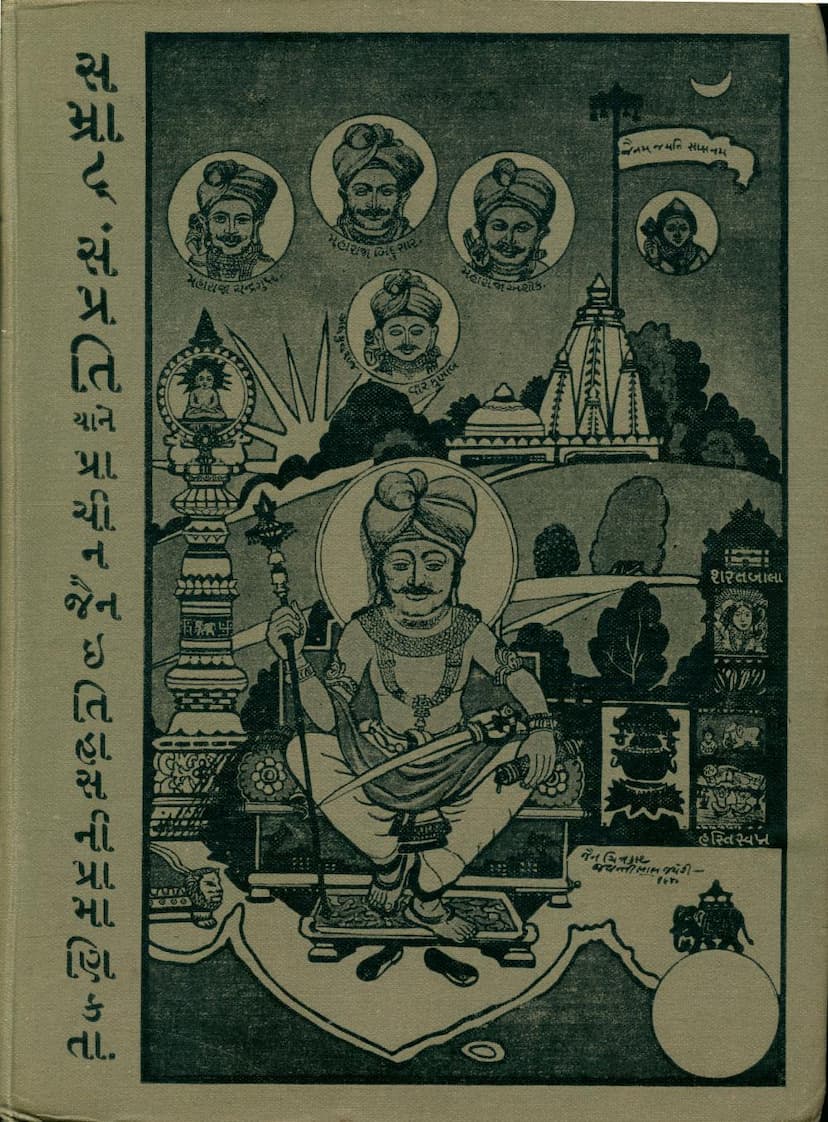Samrat Samprati Yane Prachin Jain Itihasni Pramanikta
Added to library: September 2, 2025

Summary
Here's a comprehensive summary of the Jain text "Samrat Samprati Yane Prachin Jain Itihasni Pramanikta" by Mangaldas Trikamdas Zaveri, based on the provided pages:
Book Title: Samrat Samprati Yane Prachin Jain Itihasni Pramanikta (Emperor Samprati or The Truthfulness of Ancient Jain History) Author: Mangaldas Trikamdas Zaveri Publisher: Khengarji Hiraji Co.
Overall Theme: The book aims to establish the authenticity of ancient Jain history, particularly focusing on the existence and significant contributions of Emperor Samprati, who was instrumental in spreading Jainism and establishing Jain temples across India. It seeks to counter historical skepticism and misrepresentations by providing scriptural evidence, logical arguments, and historical context.
Key Arguments and Content:
-
Defense of Ancient Jain History: The author, Mangaldas Trikamdas Zaveri, felt compelled to write this book due to emerging doubts and misinterpretations regarding the existence of Emperor Samprati and the historical accuracy of Jain scriptures. He asserts that Samprati's role in promoting Jainism was unparalleled by any other ruler.
-
Samprati's Role: The book highlights Samprati's immense contribution to Jainism. It mentions that he is credited with establishing a large number of Jain temples (referred to as "savá karoḍ jina-biṃba karāvavāḷā" – one who caused to be made 1.25 crore images of Jinas) and making India a land filled with Jain temples.
-
Chronological Challenges and Scriptural Evidence: A significant portion of the book seems dedicated to addressing challenges in Jain chronology. The author discusses the efforts of various scholars, including Muni Shri Jinavijayji, K.P. Jayaswal, Hermann Jacobi, and others, in establishing the timeline of Jain history. He scrutinizes calculations related to the Veer Nirvana era and points out discrepancies, particularly mentioning the incorrect dating of Chandragupta Maurya's reign according to Jain texts (Veer Nirvana 155 vs. 210). The author aims to resolve these chronological debates and prove the validity of Jain historical accounts.
-
Reconciliation of Historical Records: The book attempts to reconcile Jain scriptures with historical findings, including references to Buddhist texts (like Divyāvadāna), Vedic texts, Puranas, and Smritis to support the authenticity of ancient Jain history. It emphasizes a logical approach rather than mere belief or imagination in historical reconstruction.
-
Scope of Jain Literature: The author acknowledges the vastness of Jain literature, dividing it into four categories: Dravyanuyoga, Charanakarananuyoga, Ganitanuyoga, and Katha Anuyoga. He notes that while Katha Anuyoga literature is extensive, there is a need for more works presented in a modern, historical, and factual style that appeals to the general public.
-
Rebuttal of Doubts about Samprati: The book explicitly addresses the claims that Emperor Samprati never existed or that his achievements (like building numerous temples) were exaggerated. The author presents his findings as a counter-argument to such notions, aiming to prove Samprati's existence and his substantial contributions based on meticulous research.
-
Detailed Historical Narrative: The book seems to cover a broad historical spectrum, starting from the pre-Jina Rishabhdev era, detailing the lineage of the Maurya dynasty (including Chandragupta, Bindusara, and Ashok), and focusing extensively on Emperor Samprati's life, reign, religious activities, and his widespread influence in propagating Jainism. It delves into his relationship with Jain Acharyas like Aryasuhasti Suri and mentions his possible connection to Buddhist figures like Gautam Buddha.
-
Chronological Framework: The author relies on and discusses various systems of Jain chronology, including the Veer Nirvana era, and attempts to reconcile them with other historical dating methods. He references works like "Vir Nirvan Samvat aur Jain Kaalganana" by Muni Kalyanvijayji as a key source for his chronological framework.
-
Structure of the Book: The book is structured into eight sections, covering:
- Pre-Rishabhdev period, Rishabhdev's life, names and explanations of the 45 Agamas, and the 63 Salaka Purushas.
- Shishunaga dynasty (Bimbisara/Shrenik, Ajatshatru/Kunika), Gautam Buddha's life, the origin of Buddhism, similarities between Jainism and Buddhism, and the founding of Pataliputra.
- Nanda dynasty, their rule (150 years), the Great Famine, Bhadrabahu Swami, Sthulabhadra, foreign invasions, Chanakya's rise, and the establishment of the Maurya Empire.
- Chandragupta's influence on Jainism, his succession, Ashoka's reign, Kunala's blindness, Samprati's birth, and his accession to the throne.
- Samprati's coronation, his extensive travels, the description of Jivatswami's idol, Rathayatra, Samprati's religious activities, his adherence to Jain principles, and his campaigns in non-Jain regions.
- The life of Pushyamitra Shunga, his actions against Buddhism, and the fall of Pataliputra.
- Maharaja Kharavela's history, his campaigns against Magadha, and the clarification of Kalkacharya's timeline.
- Analysis of chronological errors in the Maurya and Nanda dynasties and discussion of differing views among modern scholars.
-
Acknowledgement of Sources: The book meticulously lists a wide array of sources used, including Jain Agamas, Buddhist texts (Divyavadana), Puranas (Matsya, Vayu, Vishnu, Bhagavata), various Jain historical chronicles (like Parishisht Parva, Prabhavak Charitra), inscriptions (like Hathigumpha), and works by renowned scholars like K.P. Jayaswal, Hermann Jacobi, and others.
Purpose and Significance: The book serves as a defense and affirmation of the historical accuracy of Jain traditions and figures, particularly Emperor Samprati. It aims to provide a detailed, researched account that upholds the antiquity and integrity of Jainism, responding to historical debates and skepticism with evidence from scriptures and historical analysis. The author's dedication to preserving and authenticating Jain history is evident throughout the text.